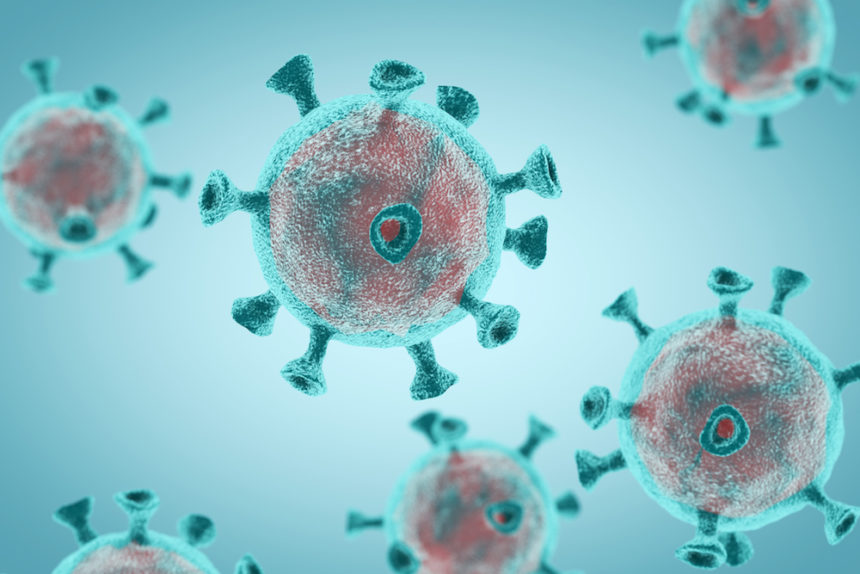Welcome to the end of the year week. I, for one, am looking forward to time off from the news. I think I’ll read comic books, spend hours draped over my couch, and even more hiding under the covers listening to the rain that’s forecast for New York City this weekend. For now, some stories that may cause anxiety, sadness, and fear but also instill hopefulness, optimism and gratitude.
Today’s Coronavirus Briefing is 1,434 words and will take you seven minutes to read. Register for the newsletter here.
Just the hits
- The U.S. has the most cases of COVID-19 in the world. The largest relief package in U.S. history moves to Congress in an effort to aid.
- Half of the 74,000 cases of coronavirus reported in the U.S. are in New York — nearly 10 times more than any other state.
- A refrigerated truck is parked outside of Elmhurst hospital in Queens, New York, to store bodies of those who succumbed to the virus.
- Fourth-year medical students in Massachusetts are graduating early to join the frontline healthcare workers.
- Read the letter President Trump wrote to governors, saying that he planned on loosening restrictions in different sections of the country in order to get people back to work.
- U.K. Prime Minister Boris Johnson has tested positive for coronavirus.
- Health care workers in Spain account for 13.6% of that country’s CV19 cases.
- In the last few days, New Orleans has emerged as the new coronavirus “hotspot.”
Takeaway
The spread of the virus is not slowing. People are dying at an alarming rate. Health care workers are getting sick and in order to shore up the frontline, medical students are being fast tracked through graduation.

The latest medical findings and innovations
“Unprecedented” is the word defining our days, but it applies not only to the havoc wreaked from the pandemic, but the efforts being made to combat it.
- In Infectious Disease Advisor, Benjamin Williams gives readers an overview of correspondences published in Lancet Psychiatry regarding the effectiveness of mental health services on older adults and medical staff during emergencies. The findings, which underscored potential gaps in mental health services during emergencies, have sounded the alarm for a more robust system.
- In MPR, Brian Park warns that albuterol inhalers may be in short supply during the virus’ reign as they’re being used to help with respiratory issues.
- A new ventilator, a virus-killing snood and a hands-free door pull are just a few of the innovations coming out of Wales.
- In the U.S., veterinary hospitals, colleges and zoos are donating their ventilators and respirator masks to hospitals. While this means some animals may not get the treatment they require to survive, Dr. Daniel Fletcher, an associate professor of emergency and critical care at Cornell University College of Veterinary Medicine says, “We’re making a much less difficult choice than the physicians in Italy who’ve had to make the decision between multiple people.”
The Takeaway:
Life-saving innovations can be as simple as door pulls, and as complex as AI. Mental health is a serious issue in the best of times, and these times are far from best. Also, keep your pets healthy.

You can check out anytime you like
Once a signpost of luxury, hotels today have turned into life-saving operations. As an industry built around hospitality, hotels and their staff are uniquely positioned to provide support during this public health crisis.
- Ellie Kahn writes for C&IT about hotels in London offering rooms to “rough sleepers.” The move comes at a time in which there are rising concerns over the viability of food banks and homeless shelters remaining open if they aren’t able to continue running their services.
- Hyatt Hotels announced furloughs, pay cuts, and temporarily shuttered locations. Marriott and Hilton recently confirmed plans to follow suit.
- In response to drastic declines in occupancy, The American Hotel & Lodging Association released a state-by-state breakdown of 1,005,955 hotel employees. It showed that 44% of hotel employees in every state are projected either to have lost or will lose their jobs in the coming weeks, with a projected loss of 3,390,014 hotel-supported jobs.
- Many hotels around the world, instead of closing, are offering their rooms to the homeless and for use as medical facilities.
- The American Hotel & Lodging Association’s Hospitality for Hope program has been created to connect hotel properties with the health community to provide housing and support.
The Takeaway:
The hospitality industry has been one of the hardest hit in this crisis, and one of the most effective at pivoting to help. The best of humanity is on view here.

Panic in pictures
If you need a break from the dizzying headlines but are unable to tear yourself away from the news, these info graphs offer some relief.
- MM&M included a graph from America Marijuana to their front page that illuminates marijuana consumers’ new habits and priorities.
- The California Life Sciences Association, with the help of W2O Group, created COR — a social analysis hub for COVID-19 that aggregates, among other key metrics, mentions of the virus on Twitter to reveal what’s happening right now, “in the wild.” Users can search the top stories, top hashtags, top voices, and top tweets from healthcare providers, life sciences, media, the scientific community, California, and around the world. It is most definitely worth a look, and a share.
- The Coronavirus Panic Index is just what it sounds like — a map of the U.S. that shows how extensively each state is panicking. The categories of concern include “general,” travel, dining, shopping, schools, employment, stock market, social distancing, and stimulus package.
- There’s this bold and rather beautiful Data Pack from Information is Beautiful.
- And this illustrated guide for kids which explains the basics, such as “corona” means “crown” in Latin; that experts believe the virus comes from bats, who transferred it to a pangolin (a scaly animal that eats ants), who transferred it to humans; and that the test is just like the flu test — they stick a Q-tip up your nose, grab a hunk of your snot, and test it to see if you’re sick. So yeah, created for kids, great for adults.
Takeaway:
The old ‘glass half empty vs. glass half full’ conceit may be a thing of the past, but when delightfully rendered info graphs, it helps disseminate the bad news less prodigiously.

Shirts versus skins
The disappearance of live sporting events has transformed marketing, advertising, and even team logos. But as an industry that thrives on connecting with its fans, sports leagues and marketers are trying to hard to pivot from long-planned tournaments to, in effect, regular pick-up games.
- Campaign UK reports on New PubMatic’s data showing dramatic shifts in category spending by global digital advertisers in the first two weeks of March. It should come as no surprise that there’s a sharp shift from “sports” and “travel,” to “news” and “hobbies.”
- Elsewhere in Campaign UK, Brian Wieser, global president of business intelligence at GroupM, is hopeful that marketers who were counting on the Olympics, can find alternative ways to impactfully engage with consumers.
- There may be no new games, but there’s new commentary for old ones. Here’s a list of seven podcasts for sports fans, from documentaries, to women’s soccer, to crime in sports — there’s something for everyone.
- Inter Miami football club, the newest Major League Soccer team, altered the club’s logo to separate great white herons. Said VP of Community Engagement Chris Allan, “COVID-19 has stopped the world in its tracks and as a result it has never been more important to heed the advice and direction of the authorities to stand for unity and participation in social distancing.”
- Yesterday was supposed to be opening day of the Major League Baseball season— a tradition as American as eating turkey on Thanksgiving. Offering fans a sense of community (while underscoring the importance of staying home), MLB created “Opening Day at Home” — a slate of 30 games broadcast nationally across various platforms.
Takeaway:
There are plenty of options for those who want to watch or listen to games or stuff about games. But nothing—nothing—can take the place of traditions like opening day, or the comfort of watching a Saturday soccer game, or the excitement of March Madness. Sigh.
Don’t touch my cornbread
In keeping with the sports theme, we leave you with these athletic diversions:
- Bill Murray golfing
- Bad Lip Reading of the 2018 NFL season
- Do not try this at home
Have a safe weekend everyone. Go outdoors for a spell. Hide under the covers for hours. See you next week.








